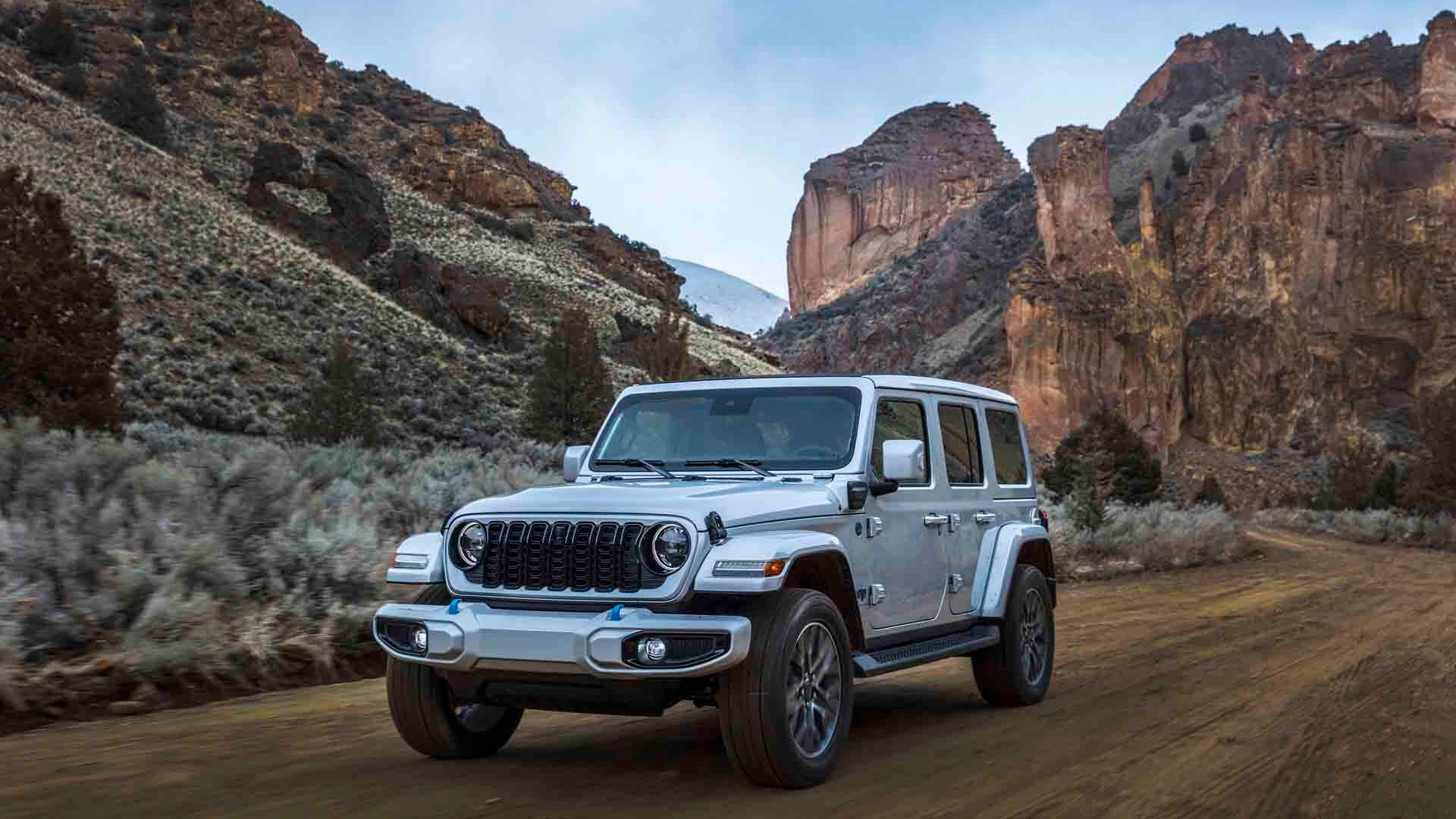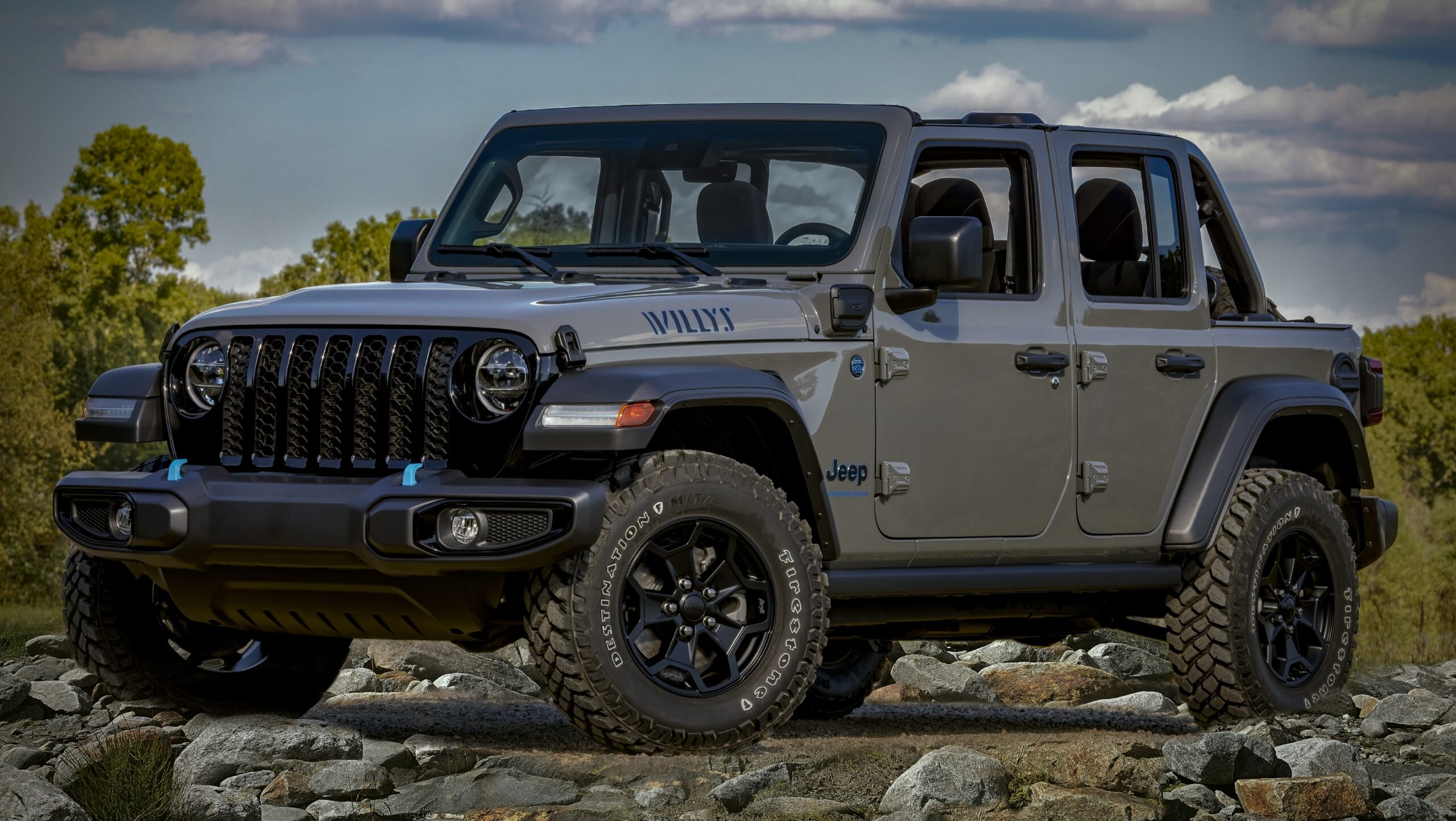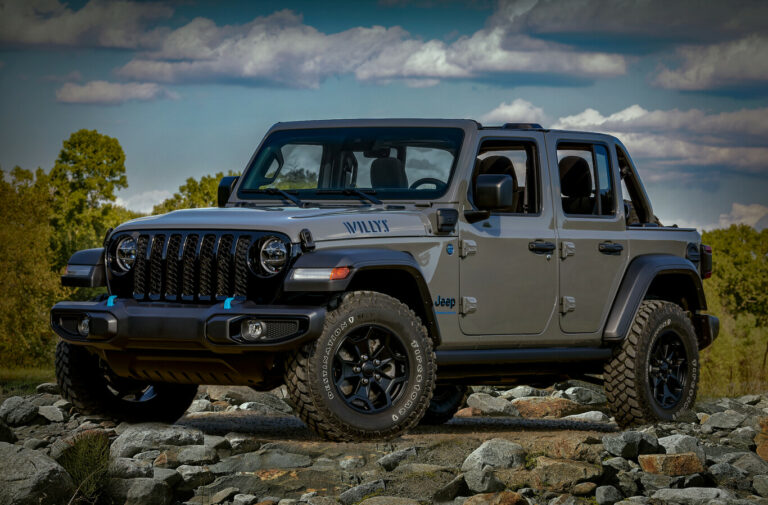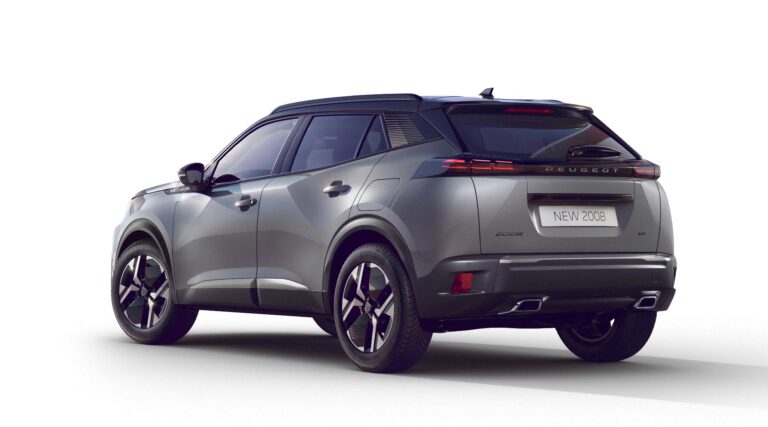Jeep SRT8 500 Hp: Unleashing the Beast Within
Jeep SRT8 500 Hp: Unleashing the Beast Within jeeps.truckstrend.com
The name "Jeep" traditionally conjures images of rugged off-road prowess, military heritage, and utilitarian design. But then came the SRT8 – a bold, audacious statement that redefined what a Jeep could be. When we talk about a "Jeep SRT8 500 Hp," we’re not just discussing a factory model; we’re stepping into the realm of high-performance tuning, where the already potent Grand Cherokee SRT8 is pushed beyond its already impressive limits. This 500-horsepower target represents a significant power bump, transforming a formidable SUV into a true street-legal monster, capable of out-accelerating many sports cars while still offering the practicality of a family hauler.
This article delves deep into the world of the 500 Hp Jeep SRT8, exploring its origins, the methods to achieve this exhilarating power level, the necessary supporting modifications, and what it truly means to own and drive such a unique machine. For enthusiasts seeking to understand or embark on the journey of creating their own high-horsepower SRT8, this comprehensive guide will illuminate the path.
Jeep SRT8 500 Hp: Unleashing the Beast Within
The Genesis of the SRT8 – From Factory Floor to Performance Icon
The story of the high-horsepower Jeep begins with the Street and Racing Technology (SRT) division, Chrysler’s in-house performance arm. Tasked with injecting raw power and track-ready dynamics into everyday vehicles, SRT first laid its hands on the Grand Cherokee for the 2006 model year, giving birth to the WK1 Grand Cherokee SRT8.
WK1 Generation (2006-2010):
The original WK1 SRT8 was powered by a naturally aspirated 6.1-liter HEMI V8 engine, producing a robust 420 horsepower and 420 lb-ft of torque. Paired with a five-speed automatic transmission and a sophisticated all-wheel-drive system, it was capable of 0-60 mph sprints in under 5 seconds – unheard of for an SUV at the time. It featured a lowered suspension, Brembo brakes, and aggressive styling that clearly differentiated it from its standard Grand Cherokee siblings.
WK2 Generation (2012-2020):
After a brief hiatus, the SRT8 returned for the WK2 generation, boasting an even larger and more powerful engine: the 6.4-liter (392 cubic inch) HEMI V8. This iteration initially pushed out 470 horsepower and 465 lb-ft of torque, later bumped to 475 horsepower and 470 lb-ft. With an 8-speed automatic transmission, performance improved further, with 0-60 mph times dropping into the mid-4-second range. The WK2 also benefited from advanced adaptive damping suspension, launch control, and a more refined interior, solidifying its status as a premium performance SUV.
While both generations offered thrilling performance, the desire for "more" is inherent in the automotive enthusiast community. The "500 Hp" target emerged as a common and achievable goal for owners looking to unlock even greater potential from their HEMI-powered Jeeps, transforming them from factory heroes into aftermarket legends.
![]()
Achieving the 500 Hp Mark – The Path to Power
Reaching 500 horsepower (crankshaft horsepower, unless otherwise specified as wheel horsepower, or whp) on a Jeep SRT8 typically involves strategic modifications to enhance the engine’s breathing, fuel delivery, and overall efficiency. The specific path often depends on the base generation (WK1 vs. WK2) and the owner’s budget and goals.
Understanding the Stock Foundation:
Both the 6.1L and 6.4L HEMI engines are robust platforms, designed with significant overhead. Their naturally aspirated nature means there’s considerable power to be gained through bolt-on modifications and proper tuning.

Key Modification Categories to Hit 500 Hp:
-
Intake & Exhaust System Upgrades:
- Cold Air Intake (CAI): A high-flow CAI replaces the restrictive factory airbox, allowing the engine to ingest more cool, dense air. This is often one of the first and most cost-effective modifications.
- Long-Tube Headers: Replacing the factory exhaust manifolds with long-tube headers significantly improves exhaust scavenging, reducing back pressure and allowing the engine to exhale more efficiently. This is a substantial power adder.
- Cat-Back or Full Exhaust System: While primarily for sound, a less restrictive exhaust system further complements header upgrades, allowing for maximum flow and often contributing a few extra horsepower.
-
Engine Tuning (ECU Flash):
- This is arguably the most crucial step. Aftermarket performance parts change the engine’s airflow and fuel requirements. A custom ECU tune (via a handheld tuner or professional dyno tune) recalibrates the engine’s computer to optimize fuel delivery, ignition timing, and other parameters for the new hardware.
- Importance of Professional Tuning: A generic tune may yield some gains, but a custom dyno tune performed by a reputable shop is essential to maximize power safely and reliably, accounting for specific vehicle variations and modifications. This ensures the air-fuel ratios are correct and timing is optimized, preventing engine damage.
-
Forced Induction (Superchargers/Turbochargers):
- While a WK2 6.4L can often reach 500 horsepower (crank) with just intake, headers, and a custom tune, achieving 500+ wheel horsepower or reaching 500 horsepower on a WK1 6.1L often necessitates forced induction.
- Superchargers: These are common for HEMI engines, providing instant, linear power delivery. Centrifugal superchargers (like ProCharger or Vortech) or positive displacement superchargers (like Magnuson or Whipple) are popular choices. They compress air into the engine, dramatically increasing power output.
- Turbochargers: Less common for SRT8s but also effective, turbos use exhaust gases to spin a turbine, forcing air into the engine. They can offer massive power but might have a slight lag.
- Note: Forced induction systems typically push power well beyond 500 hp, often into the 600-800+ hp range, and will require additional supporting modifications (fuel system, possibly internal engine upgrades) for reliability.
-
Camshaft Upgrades (for aggressive naturally aspirated builds or complementing forced induction):
- A performance camshaft can alter valve lift and duration, optimizing the engine’s breathing characteristics for higher RPMs and increased power. This is a more involved internal engine modification.
Practical Advice for Achieving 500 Hp:
- Start Simple: Begin with a cold air intake and exhaust, then move to headers and a custom tune.
- Quality Parts: Invest in reputable brands for reliability and performance.
- Professional Installation & Tuning: Unless you are an experienced mechanic and tuner, leave critical modifications and tuning to professionals. A bad tune can quickly destroy an engine.
- Dyno Testing: Use a dynamometer to measure actual horsepower and torque gains and to fine-tune your vehicle.
Beyond the Engine – Supporting Modifications for 500 Hp
Adding significant power without addressing other components of the vehicle is like building a skyscraper on a weak foundation. To handle 500 Hp reliably and effectively, several supporting modifications are crucial.
-
Drivetrain Enhancements:
- Transmission: While the factory transmissions (5-speed for WK1, 8-speed for WK2) are robust, consistent hard launches with 500+ hp can put a strain on them. Upgrades like a performance torque converter (for improved launch and efficiency) or a strengthened valve body can enhance durability and shift performance.
- Driveshafts & Axles: For extreme power levels or frequent drag racing, upgrading to stronger aftermarket driveshafts and axles can prevent breakage. For 500hp, this is often not strictly necessary for street use but good insurance for aggressive driving.
-
Braking System:
- More power means faster speeds, which necessitates more stopping power. The factory Brembo brakes on SRT8s are excellent, but upgrading to higher-performance pads, slotted/drilled rotors, and potentially stainless steel brake lines can improve fade resistance, pedal feel, and overall stopping capability, especially under sustained aggressive driving.
-
Suspension & Handling:
- The SRT8 already comes with a sport-tuned suspension, but increased power can exacerbate body roll and dive.
- Lowering Springs/Coilovers: Can reduce body roll and lower the center of gravity for improved handling dynamics.
- Sway Bars: Thicker aftermarket sway bars further reduce body roll during cornering.
- Bushings: Upgrading to stiffer polyurethane bushings can tighten up the suspension feel and improve responsiveness.
-
Tires:
- Perhaps the most critical "supporting mod" is ensuring you have adequate traction. High-performance summer tires are essential for putting 500 Hp to the pavement. All-season tires will quickly be overwhelmed, leading to excessive wheel spin and poor acceleration. For drag racing, dedicated drag radials are a must.
The Driving Experience – What 500 Hp Feels Like
Driving a 500 Hp Jeep SRT8 is an experience unlike any other. It’s a captivating blend of brute force and surprising refinement.
- Acceleration: The most immediate sensation is the sheer, relentless acceleration. From a standstill, the all-wheel-drive system hooks up, launching the heavy SUV forward with surprising violence. The surge of power is addictive, pushing you firmly into the seat as the speedometer climbs rapidly.
- Sound: With upgraded exhaust, the HEMI’s roar transforms into a thunderous symphony. At wide-open throttle, it’s a visceral, exhilarating sound that announces your presence with authority.
- Handling: While it’s still a large SUV, the upgraded suspension and low center of gravity (compared to standard Jeeps) allow the SRT8 to handle corners with impressive agility for its size. There’s a confidence that belies its weight, though it’s no lightweight sports car.
- Everyday Usability: Crucially, a well-tuned 500 Hp SRT8 can still be a perfectly livable daily driver. The increased power is there when you want it, but docile and smooth during regular commuting. This duality is a significant part of its appeal – a family vehicle that can embarrass unsuspecting sports cars at a stoplight.
Important Considerations and Challenges
Embarking on the journey to a 500 Hp Jeep SRT8 comes with its own set of considerations and potential challenges.
- Reliability: While HEMI engines are robust, significantly increasing power output places additional stress on all components. Proper tuning, quality parts, and diligent maintenance (more frequent oil changes, checking fluid levels, monitoring engine parameters) are paramount to ensuring long-term reliability. Pushing power too high without addressing internal engine strength or cooling can lead to premature wear or failure.
- Cost: Performance modifications are not cheap. The cumulative cost of parts, labor, and professional tuning can quickly add up.
- Legality & Emissions: Modifications like long-tube headers and aftermarket exhaust systems may not be legal in all states or countries, particularly concerning emissions regulations. Always check local laws before modifying your vehicle.
- Insurance: Informing your insurance company about significant modifications is crucial. It may affect your premiums or coverage in the event of an accident.
- Finding a Reputable Shop: Choosing an experienced and trusted performance shop specializing in HEMI tuning is vital. Their expertise will make the difference between a reliable, powerful build and a costly headache.
- Resale Value: Heavily modified vehicles can be a niche market. While some modifications might increase appeal to specific buyers, others might deter potential purchasers or decrease overall value if not done professionally.
Estimated Cost to Achieve Jeep SRT8 500 Hp
It’s important to note that "Jeep SRT8 500 Hp" is a power target achieved through modifications, not a specific factory trim level with a fixed price. The cost involves the base vehicle plus the modifications. Prices are estimates and can vary significantly based on part brands, labor rates, and whether you choose to install parts yourself.
| Component / Service | Description | Estimated Cost (USD) | Notes






